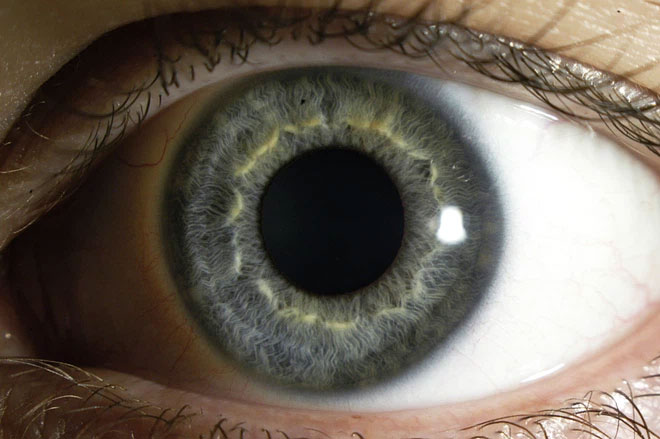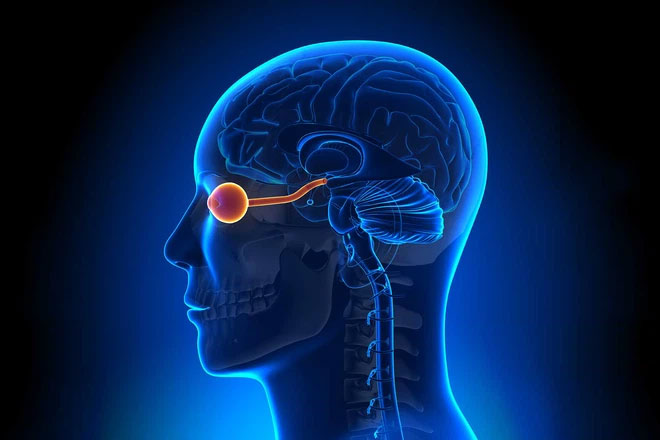Our pupils not only react to light; they also reflect a person’s state, such as stimuli, interest, or mental exhaustion, along with other conditions. The Federal Bureau of Investigation (FBI) even uses the degree of pupil dilation to detect whether someone is lying.
Recently, a study conducted in the laboratory of the Georgia Institute of Technology in the United States revealed that pupil size is closely related to differences in individual intelligence. From tests on reasoning ability, attention, and memory, it can be concluded that the larger a person’s pupil diameter, the higher their IQ score. In fact, scientists also found that among subjects with the highest and lowest scores on cognitive tests, there was a significant difference in pupil size that could be directly observed with the naked eye.

Pupil size is related to individual intelligence.
This surprising correlation was discovered while studying differences in human brain power during memory tasks. Previously, we often used pupil dilation to measure a person’s mental effort. This perspective was popularized by psychologist Daniel Kahneman in the 1960s and 1970s. Therefore, when researchers found a certain relationship between baseline pupil size and intelligence, the scientific community remained uncertain about its validity.
For this reason, the researchers decided to come from Atlanta, USA, to recruit over 500 volunteers aged 18 to 35, conducting a larger study on the relationship between pupil size and intelligence. Initially, they measured the pupil size of these subjects using eye-tracking devices. This equipment utilizes high-performance cameras and computers to capture light reflected from the pupil and cornea to gather relevant data.
The scientists measured the pupil size of the participants by having them stare at a blank computer screen for 4 minutes and during breaks. During this time, the eye tracker recorded data, allowing the research team to calculate the average pupil size of each participant.

Pupil size is the diameter of the black circular hole at the center of the eye.
Many people might still be confused, but in reality, pupil size is the diameter of the black circular hole at the center of the eye, ranging from 2 mm to 8 mm. The pupil is surrounded by the colored part of the eye – the iris. Additionally, since bright light causes the pupil to constrict, the research team kept all subjects in a stable light environment in the laboratory.
Next, participants had to complete a series of cognitive tests. These tests were designed to measure “fluid intelligence” (the ability to solve new problems through reasoning), “working memory capacity” (the ability to solve new problems through reasoning and remember information for a short period), and “attention control” (the ability to focus in a distracting environment).
For example, in the attention control test, participants had to resist looking at bold, flashing asterisks on one side of the computer screen while quickly turning their gaze to the opposite side to identify a letter. Since this letter would disappear immediately, even if participants briefly glanced at the flashing asterisks, they might miss the letter. Although humans have learned to use peripheral vision to react to objects they see, and this skill allows us to effectively detect predators or prey, this task required participants to ignore the flashing asterisks and instead focus entirely on the letters.

Pupil size is inversely correlated with age.
The research team discovered that larger pupil sizes were associated with higher fluid intelligence and better attention control, as well as a small correlation with working memory capacity, indicating a certain relationship between the brain and the eyes. Interestingly, pupil size is inversely correlated with age: older participants tended to have smaller and narrower pupils. However, after adjusting for age, the aforementioned correlation between pupil size and cognitive ability still existed.
But why is pupil size related to intelligence? Before answering this question, we need to understand what is happening in our brains. First, pupil size is related to the activity of the Locus coeruleus – a nucleus located in the upper part of the brainstem, which has extensive neural connections with other parts of the brain.
Secondly, the Locus coeruleus releases Norepinephrine – both a neurotransmitter and a hormone in the brain and body. It can regulate processes such as cognition, attention, learning, and memory. Furthermore, the Locus coeruleus helps maintain orderly brain function, allowing different brain regions to coordinate to complete tasks and goals. Dysfunction of the Locus coeruleus can disrupt the system’s functioning in the brain and is associated with various diseases, including Alzheimer’s disease and attention deficit hyperactivity disorder.
In fact, organizing and coordinating brain activities is so important that the brain expends a significant amount of energy to maintain normal function, even when we are doing nothing during this period, such as just staring at a computer or scrolling through a phone screen for a few minutes.
Additionally, there is a hypothesis that individuals with larger pupils at rest may have a stronger ability to regulate brain activity, which is beneficial for cognitive function and brain function at rest. Of course, further research is needed to explore this possibility and determine why larger pupils are associated with higher intelligence and better attention control. However, it is clear that there are still many questions and mysteries compared to what we have just discovered.


















































